Rot Fai Park, Bangkok, Thailand
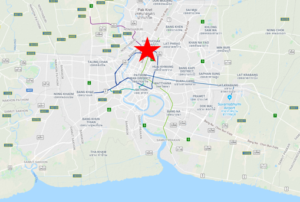
The best of Bangkok’s city parks for birdwatching is also its most convenient, easily accessible by two metro rail lines. Nearly all of the city’s common birds can be found in the gardens, lawns, and ponds that now occupy this former golf course. For Bangkok-based birdwatchers, the strong appeal of Rot Fai Park is its magnetism to migrants, especially in March and April when it draws in various cuckoos, flycatchers, and other songbirds that are otherwise rarely seen in central Thailand.
Orientation
Directions
The Rot Fai Park complex (including the three contiguous properties officially known as Wachirabenchathat, Queen Sirikit, and Chatuchak Parks) is about 10 km north of downtown Bangkok just north of the Chatuchak Market, south of Lat Phrao Central Plaza, and east of the Mo Chit Bus Terminal and MRT rail yard.
This area is a public transportation hub. Two MRT rail lines, the Green and Dark Blue, cross one another beside its northeast corner, and there are four MRT rail stations either inside or adjacent to Chatuchak Park.
By Rail. The MRT Dark Blue Line’s Chatuchak Park station has a ground-level entrance inside the park, near its southernmost point, and the Green Line’s Mo Chit station is adjacent to that. The MRT Dark Blue Line’s Phahon Yothin station is just east of the park’s northeast corner, and the MRT Green Line’s Ha Yaek Lat Phrao station is about 400 m north of that.
By Road. For those who prefer—or are in some way compelled—to drive in Bangkok, there is a parking lot inside the park, accessible from Kamphaeng Phet 3 Road, which cuts between Chatuchak Park and the neighboring Wachirabenchathat and Queen Sirikit Parks. The approach to this road is from Vibhavadi Rangsit Road northbound, just before it reaches Central Station Ladprao.
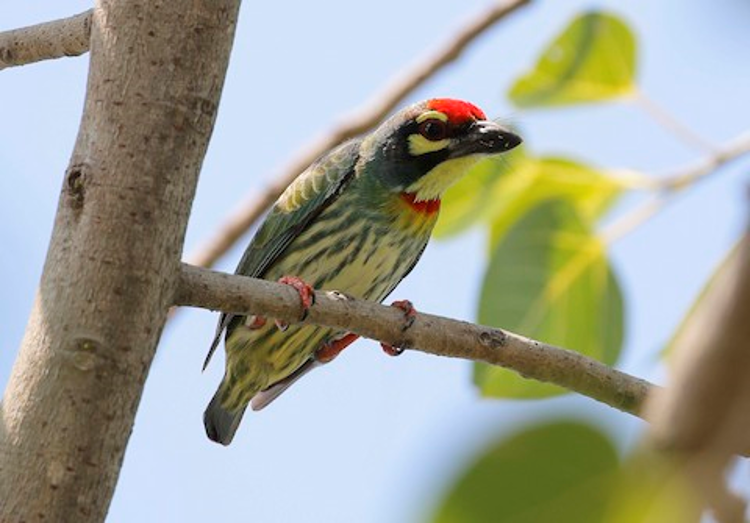
The tiny Coppersmith Barbet is common and easy to hear, but not always easy to see, throughout Bangkok, including Rot Fai Park. © Neoh Hor Kee
Birdfinding
The Rot Fai Park complex is a large island of greenery in an ocean of urban development, much like Central Park in New York, among others. So it attracts a disproportionately large quantity of the birds that pass through or over Bangkok, and can be extremely active during migration waves in both spring and fall.
Among birdwatchers based in Bangkok, it is popular specifically because of its propensity to attract numbers, diversity, and rarities.
For foreign birdwatchers visiting Thailand, especially those whose visits are not aligned with peak migration periods, it is less outstanding, but still an excellent place to get acquainted with Bangkok’s common park and garden birds. These include: Asian Openbill, Intermediate, Little, and Eastern Cattle Egrets, Chinese and Javan Pong-Herons, Zebra and Eastern Spotted Doves, Asian Koel, Asian Palm-Swift, Malaysian Pied Fantail, Large-billed Crow, Streak-eared Bulbul, Oriental Magpie-Robin, Olive-backed and Brown-throated Sunbirds, and Scarlet-backed Flowerpecker.
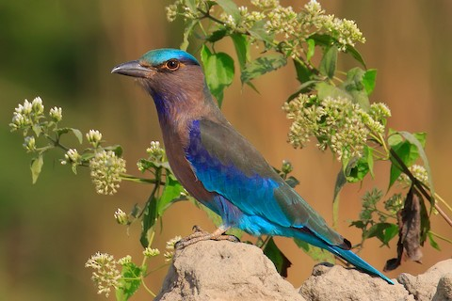
The vividly colored Indochinese Roller is easy to find in open areas at Rot Fai Park. © Gavin Emmons
In addition to the ubiquitous species, others that usually be found at the appropriate season include: White-breasted Waterhen, Asian Barred and Spotted Owlets, four kingfishers (Stork-billed, Black-capped, White-throated, and Common), Blue-tailed Bee-eater, Indochinese Roller, Small Minivet, Black-naped Oriole, Brown Shrike, Black-naped Monarch, Gray-headed Canary-Flycatcher, Plain Prinia, Asian Brown and Taiga Flycatchers, and Asian Pied and Black-collared Starlings.
There is a long list of species that are found there sporadically and an even longer list of species that have been recorded only once or twice.
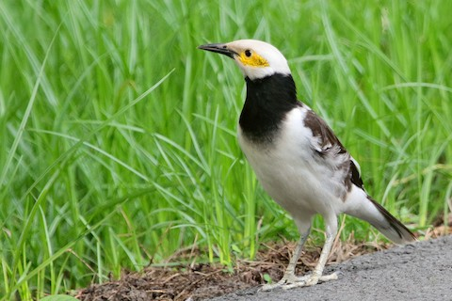
The peculiar Black-collared Starling is a fairly common resident of the Rot Fai Park complex. © David Clark

In general, the better areas for birds are along the western and northern perimeters of the complex. The northwestern property (known as either Rot Fai or Wachirabenchathat Park) has the most extensive ponds and fields, and therefore tends to have more inviting habitat for open-land and water-associated birds. This property also includes many groves and brushy areas that can produce various types of landbirds, especially during migration.
The southwestern property (Queen Sirikit Park) is more heavily wooded, with extensive shrubs and flower gardens, and it tends to attract more woodland birds—including Black-collared Starling, which is uncommon in Thailand but can be found here and at a few of Bangkok’s other city parks, and Asian Barred Owlet, which is more consistent here than anywhere else in the Bangkok area.
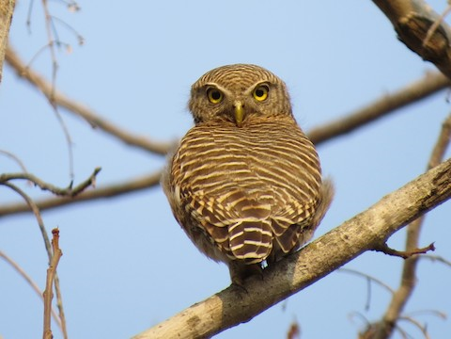
The accurately named Asian Barred Owlet is consistently present at Rot Fai Park, but not always easy to find. © Tom Wheatley
Notes
When to Visit
The park is open daily from 5:00 to 19:00. On weekends the park is very popular, so weekdays are generally better for bird observation.
Chatuchak Park is good for common species year-round, but diversity and numbers peak in migration periods, especially in March, April, October, and November.
Links